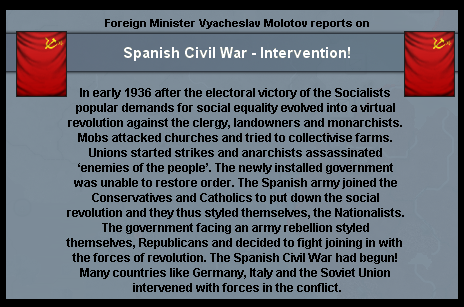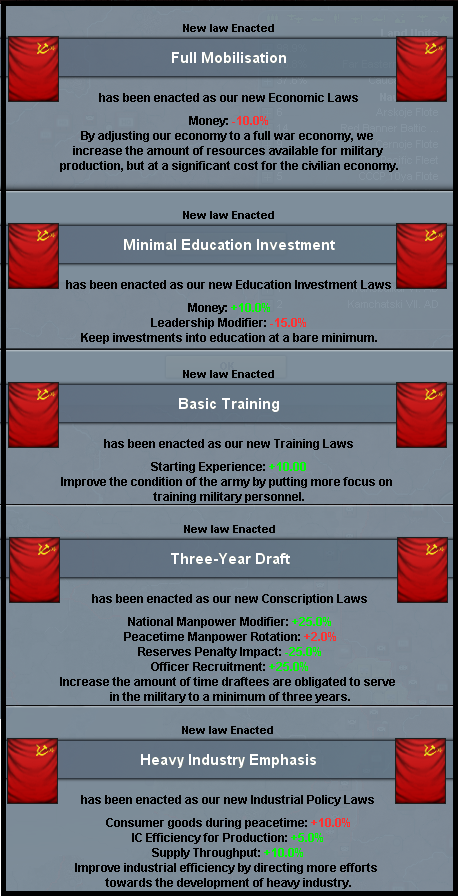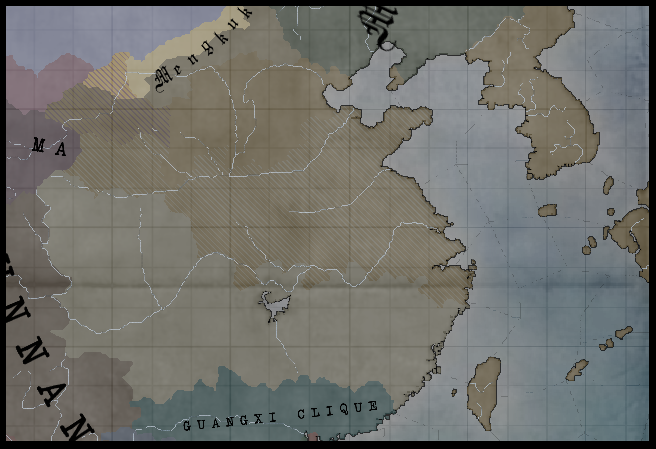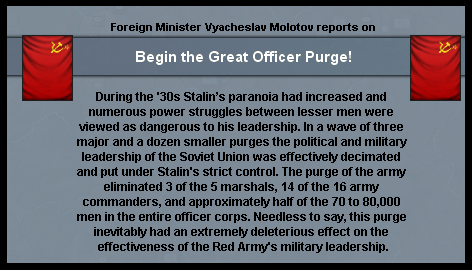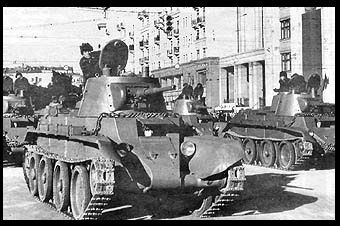Chapter 3
Icebreaker: The Polish Campaign
The 28th of September was a day of hectic diplomatic action. The Germans declared war on Czechoslovakia. The British and French issued diplomatic complaints and threatened to impose sanctions, but took no actual action. Living up to their alliance commitments, the Soviet Union declared war on Germany. Once more, the Poles refused transit rights for the Red Army; resulting in the Soviet Union declaring war on Poland. Again, no retaliation by the west. The Czechs, while maintaining their alliance, did not declare war on Poland contending themselves to face the German threat in concentration. Likewise, Poland left Czechoslovakia alone and more importantly, did not take any action to align with Germany.
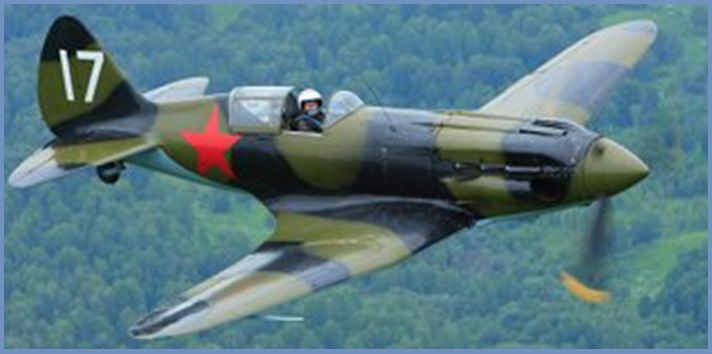
The most advanced fighter in the world, the Mig-3, although only two aviation divisions were equipped with such. The mainstay was the I-16. On the first day of battle, the Red Air Force seized complete control of the skies and inflicted a heavy defeat upon the older Polish designs facing them. The Polish air force would only make limited and insignificant efforts following these losses.
At first light the entire front came to life. Both shock armies struck in their designated sectors, while the flanking armies launched a series of faint attacks to keep the Polish frontier guards busy and unable to interfere. In the north, this included a number of challenging cross-river attacks by the 2nd Army. The southern Polish positions, facing 4th Army, were largely without any river barriers or other obstacles; they completely collapsed under the weight of the limited assault. By the end of the first day, both shock armies had achieved their initial objectives, and the 4th Army had been ordered to conduct a general advance. Two days later, the northern Polish positions along the Daugava River likewise collapsed and the 2nd Army was ordered to conduct a general advance. While the most optimistic officers believed such a success would occur, the majority had expected a slow grinding battle west; within 48 hours, tanks and trucks were pushing through the shock armies and beginning a rapid advance.
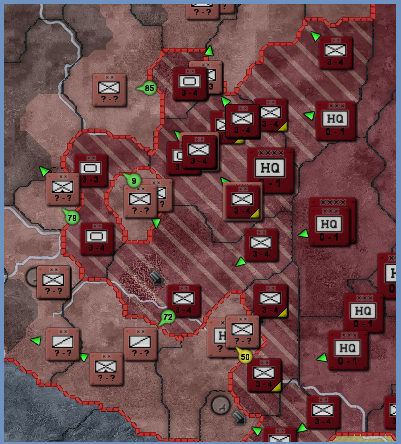
The southern front, following the unleashing of the 1st Tank Army
In the south, the 1st Tank Army had pushed through the gap created by the 9th Shock Army. This penetration rapidly tore open the entire southern front. On 4 October, elements of the tank army captured Lvov. Over the course of the next two days, they encircled and destroyed several Polish divisions, and facilitated the opening of a corridor to Czechoslovakia by the 7th. In the north, dense forests, poor roads, and some determined Polish resistance had delayed the 10th Tank Army; but by the 7th they had penetrated just as far into Poland as their southern counterparts. With the corridor open to Czechoslovakia, the 1st Tank Army started drifting northwest; mostly as a result of outflanking Polish forces, rather than a strategic decision. As a result, by the 9th, both armies were advancing on Brest-Litovsk and a link-up appeared imminent. Determined Polish resistance within the fortress ensured that such an event was delayed, if only until the 13th.
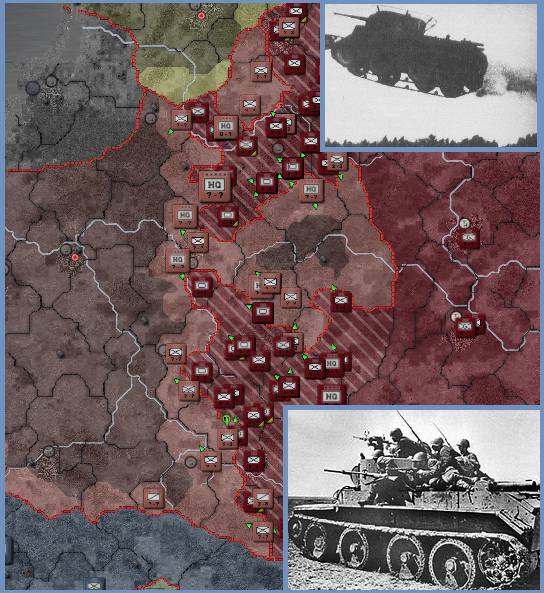
The tank armies, closing on Brest-Litovsk.
In the meantime, the general advance of the 2nd and 4th Armies along with operations by the 3rd and 9th Shock armies had saw important gains made: Forward airfields were overrun for the Red Air Force to move forward, numerous Polish divisions were trapped in the north in the “Varena Pocket”, several pockets in the south were cleared, and several Polish divisions had been forced into and trapped within the Pripyat marshes. In particular, the Varena Pocket had been created following two weeks of fighting as Polish forces attempted to flee the advance of the 2nd Army. Almost trapped at Wilno, a desperate attack saw a lifeline opened and the Polish general retreat continue. They had been cut off at Lida, outside of Grogno, by the 3rd Shock Army and elements of the 10th Tank Army. Here, Polish relieve forces attempted to break-in while the trapped troops tried to breakout. Heavy fighting took place around Lida, resulting in several Red Army attacks being repulsed the collaspe and surrender of a Soviet Motor Rifle division (9,500 men). Despite this tactical setback, and some heavy losses, the pocket was eventually cleared. It, along with the destruction of several others along the entire front resulted in the capture 102,000 Poles (the destruction of over 25 divisions).
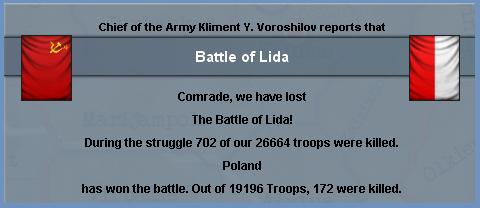
The most significant tactical setback, with the exception of the surrender of a division!
On the strategic side of things, it was realized that the pre-war plan of just the 11th Army reinforcing the Czechs was wholly inadequate. As a result, the army was reassigned from the Western Front and placed under the command of the uncommitted Southwest Front. The latter, which included the 13th Army, was ordered to reinforce 11th Army's efforts, and move into Czechoslovakia. In the north, aware that the full might of the German military may soon arrive following the Polish collapse, the Baltic Front’s 14th Army was ordered to move into Poland to ready itself to repulse any assault from East Prussia and to then conquer the territory.
Despite their slow progress, several rifle divisions had finally managed to catch up to the two tank armies. These lead troops broke through the crumbling Polish defenses to allow the tanks and trucks to resume their advance. By the 16th, the 1st Tank Army had reached the outer suburbs of Warsaw. Two days later, the 10th Tank Army arrived on Warsaw’s doorstep. This joint arrival also marked Italy’s entry into the war, who rapidly started moving troops to the Czech’s southern front. On the 19th, Lodz fell to the 1st Tank Army, and on the 20th the 10th Tank Army completed the encirclement of Warsaw. Four days of heavy fighting followed before the capital was taken. On 24 October, just 26 days following the opening of the campaign, Poland surrendered.
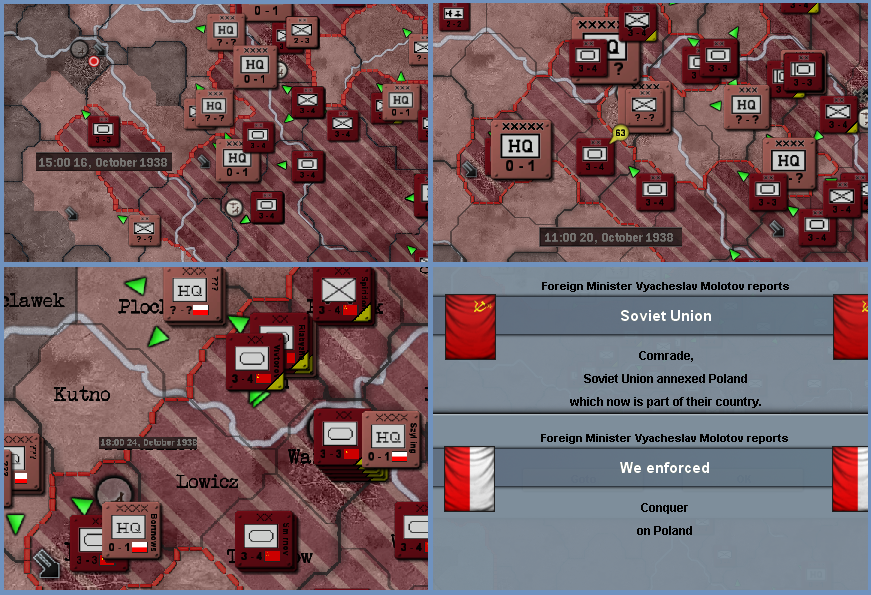
The progress of the final battles
In the short campaign, a rapid advance thus far not seen had been achieved outstripping even the wildest expectations of the most optimistic commanders. In comparison to the 320,000 casualties seen in the first month of the Great War, just a mere 9,497 men had become casualties within roughly the same time span. Polish battle losses amounted to roughly 10,500. Poland had been caught off-guard, not sensing the consequence of their ongoing rejections. As a result, most of their divisions were not mobilized and the Red Army only engaged cadres of trained men. The two tank armies overran large numbers of troops and ensured the Poles were unable to concentrate their forces or create a stable defensive line, resulting in their defeat and rather lackluster defense of Warsaw. The sudden collapse of the Polish Government left the Red Army's Western Front completely fragmented and not deployed for the upcoming battle with the Germans. A frantic effort began to regroup the various armies before German troops launched a full-scale offensive. Furthermore, the Southwest Front had not advanced far into Czechoslovakia, and the Baltic Front had not yet arrived to mask East Prussia.


